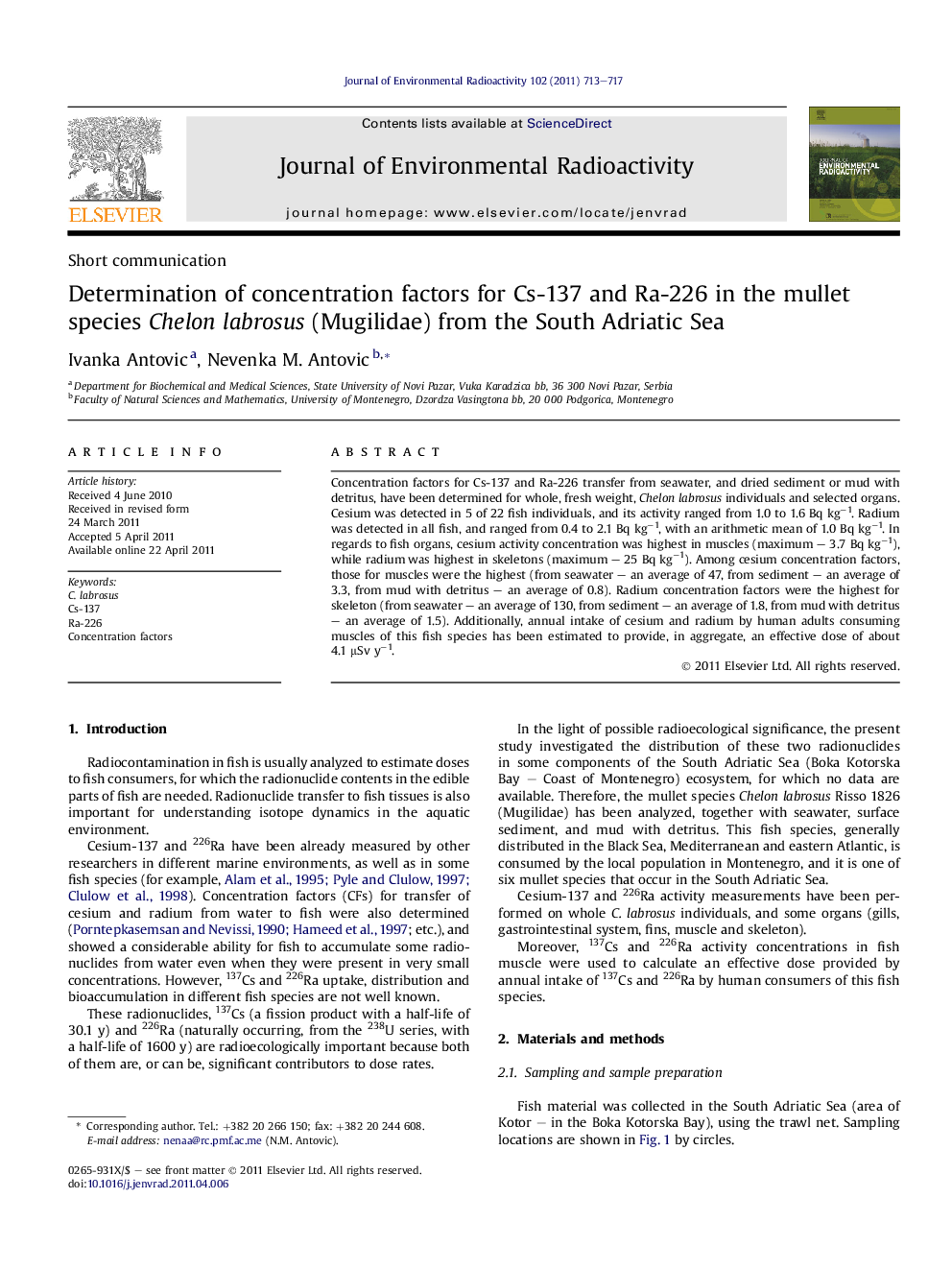| Article ID | Journal | Published Year | Pages | File Type |
|---|---|---|---|---|
| 1738660 | Journal of Environmental Radioactivity | 2011 | 5 Pages |
Concentration factors for Cs-137 and Ra-226 transfer from seawater, and dried sediment or mud with detritus, have been determined for whole, fresh weight, Chelon labrosus individuals and selected organs. Cesium was detected in 5 of 22 fish individuals, and its activity ranged from 1.0 to 1.6 Bq kg−1. Radium was detected in all fish, and ranged from 0.4 to 2.1 Bq kg−1, with an arithmetic mean of 1.0 Bq kg−1. In regards to fish organs, cesium activity concentration was highest in muscles (maximum – 3.7 Bq kg−1), while radium was highest in skeletons (maximum – 25 Bq kg−1). Among cesium concentration factors, those for muscles were the highest (from seawater – an average of 47, from sediment – an average of 3.3, from mud with detritus – an average of 0.8). Radium concentration factors were the highest for skeleton (from seawater – an average of 130, from sediment – an average of 1.8, from mud with detritus – an average of 1.5). Additionally, annual intake of cesium and radium by human adults consuming muscles of this fish species has been estimated to provide, in aggregate, an effective dose of about 4.1 μSv y−1.
► Radionuclide transfer from seawater, sediment and mud with detritus. ► Concentration factors for Cs-137 and Ra-226 in C. labrosus whole fish and organs. ► Cs-137 concentration factors are highest for C. labrosus muscles. ► Ra-226 concentration factors are highest for C. labrosus skeleton.
